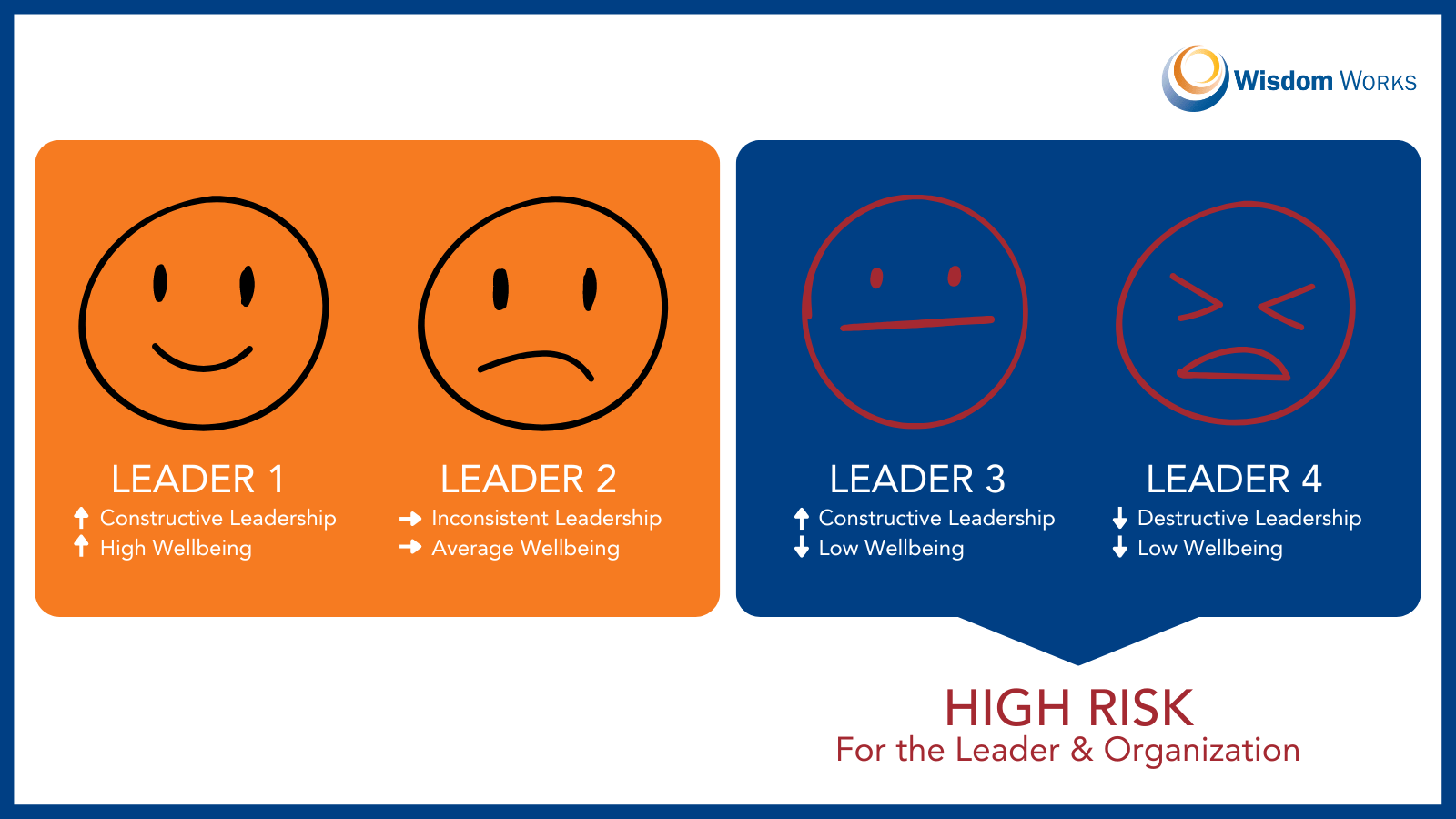Leadership & Wellbeing: It’s a Balancing Act!
As a leader, you undoubtedly must figure out how to balance your own wellbeing with your responsibilities to the people and tasks you lead. Sometimes you find yourself in optimal situations, thriving environments that provide the resources, autonomy, and support to do your job well. At other times, you find yourself in draining situations, such as when work conditions are toxic, too many demands are thrown your way, or your gut tells you you’re giving a great deal of yourself at work which isn’t reciprocated by the company.
How do you respond? Do you protect your energy and wellbeing? Buffer the pressures that are hurling toward the people you lead? Create islands of thriving right where you are, no matter how else the organization operates? Become defensive and reactive?
There is no right answer to these questions—but there are big implications for the path you take.
Leadership & Wellbeing are Both a Matter of Resources
Organizations and the world are calling for transformational leadership, leaders who are internally well resourced and skilled at building teams around an inspiring vision and purpose, developing and empowering people, taking healthy risks, promoting positive relationships, achieving results sustainably, and leading by example. Depleted leaders show lower levels of this constructive way of leading.

It isn’t rocket science as to why: When we’re exhausted and overstressed, we’re usually less able to bring the best of our leadership potential to the work to be done, the people doing it, and ourselves.
Research published by our team at Wisdom Works, with support of social scientists at the University of Colorado at Colorado Springs, wholeheartedly agrees. When we used our wellbeing leadership assessment Be Well Lead Well Pulse® with leaders across healthcare, pharma, and other industries, we found that a leader’s wellbeing strongly correlated to the impact they reported.
Said another way: 34% of a leader’s impact in these industries could be explained by the leader’s wellbeing. The extent to which the leader experienced their self as well resourced mentally, emotionally, socially, and physically—in essence, their innate capacity to thrive—significantly shaped their ability to lead.
Do Any of These Leadership Profiles Speak to You?
The interplay between leader behavior and wellbeing can get nuanced. When Dr. Anja Wittmers and her team at Germany’s Federal Institute for Safety & Health and Bielefeld University performed this excellent research on the topic, four distinct leadership profiles emerged.

PROFILE 1: Constructive Leadership + High Wellbeing
38% of leaders represented this profile. Their transformational leadership style enabled them to expand the personal, social, and organizational resources at their disposal, with a high level of wellbeing as their foundation. In our work with organizations, this is leadership at its peak, where the capacities to be well and lead well enable leaders to flourish in the face of uncertainties and complexities inherent in leading businesses today, plus steward the conditions for all people to thrive (including themselves).
PROFILE 2: Inconsistent Leadership + Inconsistent Wellbeing
14% of leaders showed inconsistent leadership, along with inconsistent wellbeing. While their leadership style was slightly less transformational than Profile 1, they also displayed some destructive behaviors. Not surprisingly, their sense of mental and emotional wellbeing was also average. We see this profile show up in our work as leaders languish in their leadership, as well as their lives overall—and often aren’t sure how to make a positive shift in either arena.
PROFILE 3: Constructive Leadership + Low Wellbeing
45% of leaders fell into this group, the largest profile in the study. These leaders had high levels of transformational leadership, combined with high feelings of irritation and exhaustion impairing their wellbeing. We see this profile show up in our work with many purpose-driven managers, healthcare professionals, and educational leaders, as examples, who are wonderfully committed to serving a greater purpose and unlocking the potentials of people, yet do so at the expense of themselves.
PROFILE 4: Destructive Leadership + Low Wellbeing
Only 2% of leaders in this study reflected a profile of destructive leadership and low wellbeing. With potentially a high sense of frustration, burnout, or rust-out, these leaders were not only less apt to be transformational, they tended to exhibit hostile behaviors, verbally and nonverbally. In our experience, this is often the kind of leader that sees situations as a zero-sum game that must be won at all costs—the kind of leadership which makes for toxic work cultures.
Reflect on the leadership across your organization, as well as yourself. When it comes to these profiles, where do you stand?
While leaders in Profiles 1 and 2 can continually evolve their leadership and wellbeing, Profiles 3 and 4 reflect potentially high-risk groups not only for the organization, but for a leader’s long-term effectiveness and life overall. These leaders may be, even unconsciously, more apt to become defensive or reactive in how they lead because of their low wellbeing.
Effective leadership is a key pillar for the success of your organization, so it is critical to examine where your leaders are in terms of their leadership and wellbeing capacities. Then, map out a holistic strategy—from recruiting, onboarding, development, compensation, to other structures of support—that will empower your leaders to lead well and be well.
This leadership strategy is a means to uplevel your organizations, teams, and the leaders themselves.
We’re Just Beginning to Experience the Role of Wellbeing in Leadership
And it’s about time.
While we at Wisdom Works have long believed in the connection between leadership and wellbeing, more and more research is emerging on the true impact and opportunities for prioritizing wellbeing in all forms of leadership. A new realization is emerging: Our innate capacity to thrive—our deepest wellbeing—is an invaluable resource. One that enables individuals, teams, and whole organizations to operate with purpose, innovation, and resilience amidst our constant stressors and demands. Plus, achieve goals in ways that elevate our individual and collective wellbeing.






